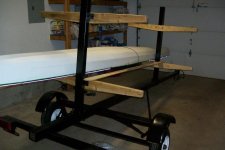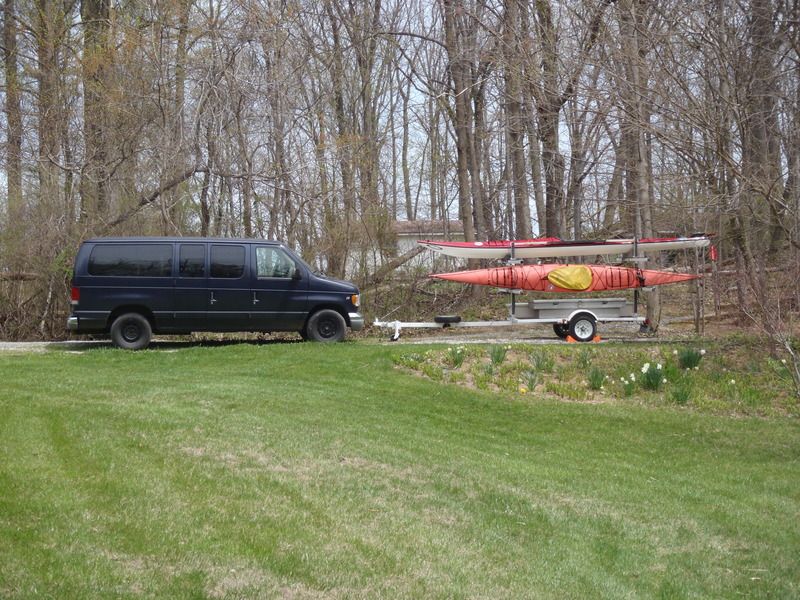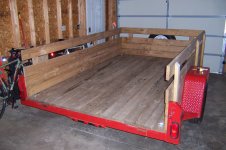Tongue length may be a problem with a U trailers other then that sounds like it would work
Some years back I built a two canoe hauler on a utility trailer frame. I kept the same short tongue and had the two canoes stacked vertically over the tongue centerline where they didn’t interfere with the vehicles turning radius.
Beside the center-racked canoes I had 8’ long open-top “pockets” on either side which were handy for paddles and other long linear gear. Those pockets would also hold a couple of bikes on each side, wheels in the pockets and I could use the gear in those side storage bins to get the tongue weight right.
I could still haul a couple of boats atop the truck or van since the clearance between rooftop and trailer top boats was ----- ___ sufficient for going up or down steep gradients.
It was a simple build and worked well in a variety of hauling guises. I added a hinged lid and panels fore and aft on the bottom center slot so it could be used as a closed gear area if needed in that mode.
Worked well, served our purpose….and I hated driving a trailer. Finding parking, merging or changing lanes in traffic, keeping a mirror eye on things 20 feet behind the van, going attentively light on the brakes, worrying about those winky trailer tires and, especially, backing up with that short tongue.
When we got a full-sized van for family travel and I could rack 4 canoes on 4 crossbars along that long roofline we never used the trailer as boat hauler again.
That is very much my personal preference to be trailer free, reinforced by an episode in the Manti La Salles when we drove up a somewhat less than one lane dirt road, found it blocked by a wash out and had to back up for a half mile of twists and turns to the nearest wide spot. That was enough for me to foreswear ever hauling a trailer to an unfamiliar place.



